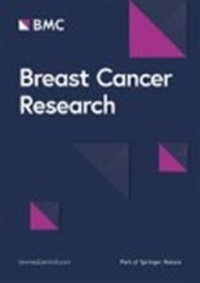Small molecule inhibitor targeting the Hsp70-Bim protein–protein interaction in estrogen receptor-positive breast cancer overcomes tamoxifen resistance
IF 6.1
1区 医学
Q1 ONCOLOGY
引用次数: 0
Abstract
Estrogen receptor (ER) positive patients compromise about 70% of breast cancers. Tamoxifen, an antagonist of ERα66 (the classic ER), is the most effective and the standard first-line drug. However, its efficacy is limited by the development of acquired resistance. A specific inhibitor of Hsp70-Bim protein–protein interaction (PPI), S1g-2, together with an inhibitor of Hsp70-Bag3 PPI, MKT-077 and an ATP-competitive inhibitor VER155008, were used as chemical tools. Cell viability assays, co-immunoprecipitation and gene knockdown were used to investigate the role of Hsp70 in tamoxifen resistance. A xenograft model was established in which tamoxifen-resistant breast cancer (MCF-7/TAM-R) cells maintained in the presence of 5 μM tamoxifen were subcutaneously inoculated. The anti-tumor efficiency of S1g-2 was measured after a daily injection of 0.8 mg/kg for 14 days. It was revealed that Hsp70-Bim PPI protects ERα-positive breast cancer from tamoxifen-induced apoptosis through binding and stabilizing ERα36, rather than ERα66, resulting in sustained EGFR mRNA and protein expression. Disruption of Hsp70-Bim PPI and downregulation of ERα36 expression in tumor samples are consistent with the in vitro functions of S1g-2, resulting in about a three-fold reduction in tumor volume. The in vivo activity and safety of S1g-2 illustrated that it is a potential strategy for Hsp70-Bim disruption to overcome tamoxifen-resistant ER-positive breast cancer.针对雌激素受体阳性乳腺癌中 Hsp70-Bim 蛋白-蛋白相互作用的小分子抑制剂可克服他莫昔芬抗药性
雌激素受体(ER)阳性患者约占乳腺癌患者的 70%。他莫昔芬是ERα66(典型的ER)的拮抗剂,是最有效的标准一线药物。然而,它的疗效因获得性耐药性的产生而受到限制。研究人员使用了Hsp70-Bim蛋白-蛋白相互作用(PPI)特异性抑制剂S1g-2、Hsp70-Bag3 PPI抑制剂MKT-077和ATP竞争性抑制剂VER155008作为化学工具。细胞活力测定、共免疫沉淀和基因敲除被用来研究 Hsp70 在他莫昔芬耐药性中的作用。建立了一种异种移植模型,将他莫昔芬耐药的乳腺癌(MCF-7/TAM-R)细胞在 5 μM 他莫昔芬存在下进行皮下注射。每天注射 0.8 毫克/千克,连续注射 14 天后,测定了 S1g-2 的抗肿瘤效率。研究发现,Hsp70-Bim PPI通过结合和稳定ERα36(而非ERα66),导致表皮生长因子受体mRNA和蛋白质的持续表达,从而保护ERα阳性乳腺癌免受他莫昔芬诱导的细胞凋亡。肿瘤样本中 Hsp70-Bim PPI 的破坏和 ERα36 表达的下调与 S1g-2 的体外功能一致,从而使肿瘤体积缩小了约三倍。S1g-2的体内活性和安全性表明,它是一种潜在的Hsp70-Bim干扰策略,可用于攻克对他莫昔芬耐药的ER阳性乳腺癌。
本文章由计算机程序翻译,如有差异,请以英文原文为准。
求助全文
约1分钟内获得全文
求助全文
来源期刊

Breast Cancer Research
医学-肿瘤学
自引率
0.00%
发文量
76
期刊介绍:
Breast Cancer Research is an international, peer-reviewed online journal, publishing original research, reviews, editorials and reports. Open access research articles of exceptional interest are published in all areas of biology and medicine relevant to breast cancer, including normal mammary gland biology, with special emphasis on the genetic, biochemical, and cellular basis of breast cancer. In addition to basic research, the journal publishes preclinical, translational and clinical studies with a biological basis, including Phase I and Phase II trials.
 求助内容:
求助内容: 应助结果提醒方式:
应助结果提醒方式:


